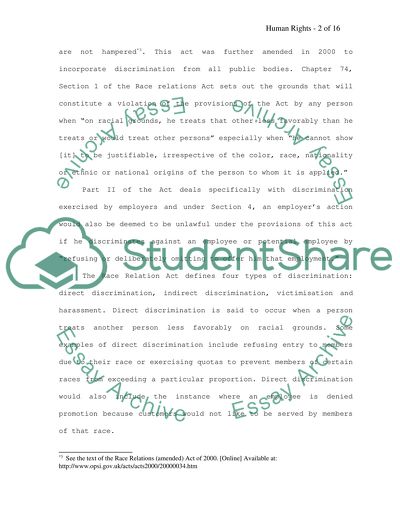Cite this document
(“Race Relations Act 1976 And The Actions That Athea And The Commission Essay”, n.d.)
Race Relations Act 1976 And The Actions That Athea And The Commission Essay. Retrieved from https://studentshare.org/social-science/1535676-race-relations-act-1976-and-the-actions-that-athea-and-the-commission-for-racial-equality-could-take-in-respect-of-them
Race Relations Act 1976 And The Actions That Athea And The Commission Essay. Retrieved from https://studentshare.org/social-science/1535676-race-relations-act-1976-and-the-actions-that-athea-and-the-commission-for-racial-equality-could-take-in-respect-of-them
(Race Relations Act 1976 And The Actions That Athea And The Commission Essay)
Race Relations Act 1976 And The Actions That Athea And The Commission Essay. https://studentshare.org/social-science/1535676-race-relations-act-1976-and-the-actions-that-athea-and-the-commission-for-racial-equality-could-take-in-respect-of-them.
Race Relations Act 1976 And The Actions That Athea And The Commission Essay. https://studentshare.org/social-science/1535676-race-relations-act-1976-and-the-actions-that-athea-and-the-commission-for-racial-equality-could-take-in-respect-of-them.
“Race Relations Act 1976 And The Actions That Athea And The Commission Essay”, n.d. https://studentshare.org/social-science/1535676-race-relations-act-1976-and-the-actions-that-athea-and-the-commission-for-racial-equality-could-take-in-respect-of-them.


